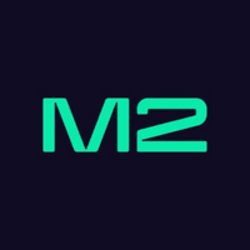
The scene of digital assets is vast, with NFTs (non-fungible tokens) sitting prominently in the spotlight. These digital assets have stirred interest among creators, collectors and investors, as seen in Sui NFT marketplace. But the true game-changer for NFTs is the advanced indexing technology that makes their discovery and trading possible. Indexing NFTs is crucial for managing the broad and intricate data landscape of blockchain, making this information easy to find, accessible and practical for use.
Understanding NFT Indexing
Indexing NFTs involves organizing data to facilitate easy retrieval. Imagine the daily influx of NFTs on the blockchain. Finding one specific NFT without an orderly system would be extremely difficult. That’s where NFT indexing comes into play. It categorizes NFT data across various blockchains, like ETH and the emerging Sui marketplace. Whether it’s artists monitoring the success of their work or investors hunting emerging opportunities, indexing plays a pivotal role in the NFT ecosystem.
NFT indexing is not dissimilar to how search engines like Google index the vast information on the internet. Just as these search engines make it easy to find specific web pages among billions, NFT indexing makes it simple to locate specific digital assets among innumerable NFTs. It brings order to the potentially overwhelming world of NFTs, making them accessible and practical for all types of users.
The Mechanics Behind NFT Indexing
Manually checking every transaction on blockchains such as Ethereum or Aptos would be impractical. Instead, NFT indexers automatically track these transactions using APIs (Application Programming Interfaces) and SDKs (Software Development Kits). They keep records of NFT creations, transfers and sales. This transparency makes the market more accessible to those new to digital assets, simplifying entry into this expansive field.
The process of NFT indexing involves continuous scanning of blockchain transactions. Whenever a new NFT is minted or an existing one is transferred or sold, this information is recorded by the indexer. This real-time updating ensures that the index always reflects the current state of the NFT market. Sophisticated algorithms are employed to categorize and organize this data, making it easily searchable.
The Impact of NFT Indexing
Though NFT indexing might seem like a technical detail, its effects are wide-reaching. For artists, it means broader exposure, allowing their works to be found and enjoyed worldwide. Collectors benefit from easier searches and the ability to verify authenticity. Essentially, NFT indexing promotes a more open and straightforward marketplace for digital art and collectibles.
Moreover, NFT indexing is crucial for the valuation of digital assets. By providing historical data on NFT sales and transfers, indexing helps establish provenance and track the market performance of individual assets. This information is invaluable for buyers and sellers looking to make informed decisions in the NFT marketplace. It helps bring a level of transparency and accountability to a market that can sometimes seem opaque.
Exploring New Horizons: The Future of NFT Indexing
As blockchain technology grows, NFT indexing will also advance. Future developments are likely to improve search functionalities and user interfaces and include support for more blockchain platforms. These improvements will keep the NFT world easy to explore for both enthusiasts and professionals. By enhancing connectivity and transparency in the digital asset community, indexing will pave the way for endless possibilities within the blockchain universe.
As more people venture into the world of NFTs, the role of indexing will become increasingly critical. It will be the key to ensuring that this expanding universe remains accessible and navigable for all. Whether you’re an artist looking to showcase your digital creations, a collector in search of rare finds, or an investor trying to spot the next big trend, the future of NFTs will be built on the solid foundation of advanced indexing technologies.











































































Be the first to comment